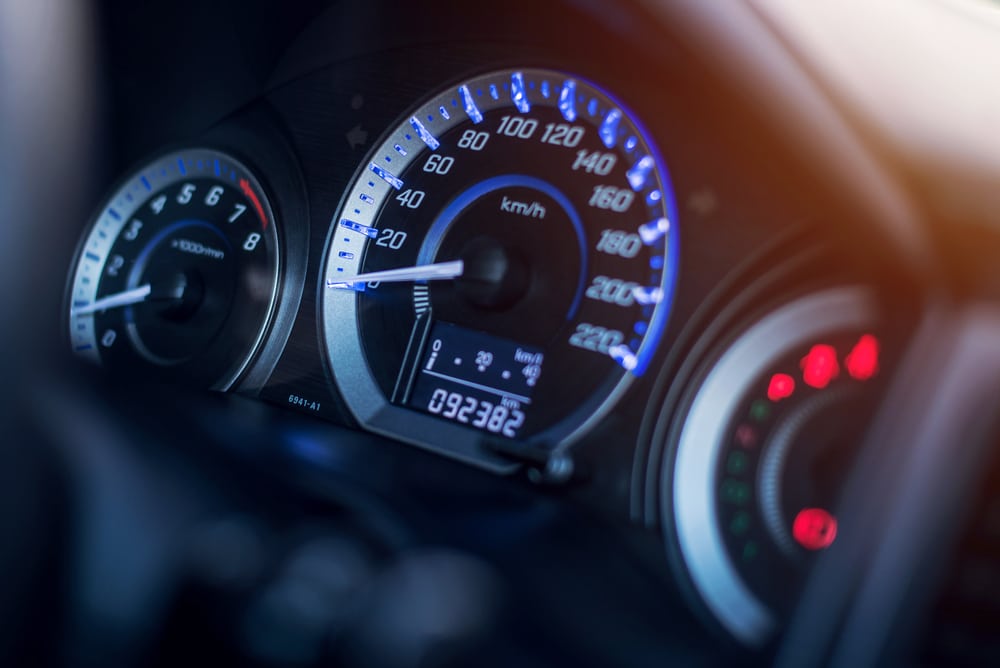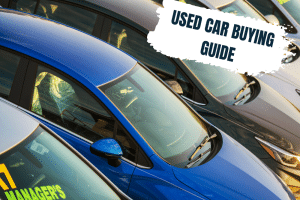
- The Savvy Promise
At Savvy, our mission is to empower you to make informed financial choices. While we maintain stringent editorial standards, this article may include mentions of products offered by our partners. Here’s how we generate income.
In this article
Buying a used car can be a cost-effective way to get a new set of wheels, but it's essential to be vigilant and aware of potential pitfalls of buying a car second hand. One issue that buyers could encounter is odometer rollback, where the displayed mileage on the vehicle is tampered with to make it appear lower than it actually is. In this blog, we'll explore how to spot a car with odometer rollback and what to do if you suspect odometer tampering to help you avoid potential scams.
What is odometer rollback?
Odometer rollback, also known as odometer fraud, odometer tampering or clocking, is an illegal practice where the mileage recorded on a vehicle's odometer is altered to display a lower mileage than the car has actually travelled. Depending on whether the odometer is analogue or digital, this can be done through physical manipulation or using fraudulent software to reprogram the unit.
Unscrupulous sellers roll back odometers to inflate the value of used cars and deceive buyers. This can lead to significant financial loss and mechanical issues for the buyer down the line, costing them thousands of dollars in unexpected repairs and maintenance, as well as potential safety issues.
According to data from Carify, in Australia odometer fraud is most prevalent in New South Wales, followed by Victoria and Queensland.
What are the signs of odometer rollback?
Detecting a rolled-back odometer can be challenging, but there are signs to look out for when buying a used car to help you avoid falling victim to this fraudulent practice. Here are some key red flags:
- Altered or tampered odometer: look for physical signs of tampering with the odometer, such as scratches, loose panels or misaligned numbers.
- Inconsistent wear and tear: inspect the vehicle for signs of wear and tear that are inconsistent with the reported mileage. Excessive wear on the seats, steering wheel, pedals and other interior components may indicate that the car has been driven more than the odometer suggests.
- Mismatched documentation: check the vehicle's documentation, including the title and registration papers, for any discrepancies in the reported mileage.
- Missing service records: lack of maintenance records or incomplete service history may indicate efforts to conceal high mileage or past maintenance.
- Unusual odometer readings: be cautious if the mileage on a used car seems unusually low for its age and condition. While low mileage can sometimes indicate careful ownership, it can also be a sign of odometer rollback, especially if other signs of tampering are present.
- Suspiciously low price: a significantly lower price for a vehicle with relatively low mileage compared to similar models on the market may indicate odometer rollback – or be a sign of other hidden issues or unlawful activities.
- Evasive seller: if the seller avoids questions about the car's history or mileage, be cautious. They may be trying to conceal information about the vehicle's true condition or mileage, which could indicate odometer tampering or other underlying issues.
What should I do if I suspect odometer tampering?
If you are interested in buying a car but are worried about odometer rollback, you can:
- Request a PPSR report: obtain a Personal Property Securities Register (PPSR) report, which provides information about the car's history, including whether it has been written off or stolen. You can obtain this report online for a small fee through the Australian government's Personal Property Securities Register website.
- Get a car history report: a car history report provides a comprehensive overview of a used vehicle's reported history in Australia. It includes a PPSR certificate as well as key information such as existing finance, damage history and odometer readings.
- Seek professional assistance: get a qualified mechanic or automotive expert to perform a comprehensive pre-purchase inspection and car odometer check. They can assess the vehicle's condition and identify any indications of odometer tampering or fraudulent activities.
- Walk away: if the seller is evasive and avoids questions or the discrepancies seem too significant, trust your gut and move on. Remember, you have the right to ask for explanations and clarification. Don't be pressured into a purchase you're uncomfortable with.
If you suspect you have bought a car with rolled back odometer in Australia, you should take immediate action to address the situation and protect your rights as a consumer. Here's what you can do:
- Gather evidence: document any discrepancies or suspicions regarding the car's mileage, including photos of the odometer reading, service records and any communication with the seller regarding the vehicle's history.
- Contact the seller: reach out to the dealership or private seller who you suspect sold you a car with odometer rollback and express your concerns about odometer tampering. Provide them with evidence supporting your claim and request a resolution to the issue.
- Consult legal advice: if the seller is unresponsive or unwilling to address the problem, seek guidance from a qualified legal professional specialising in consumer protection laws. They can advise you on your rights and options for recourse under Australian law.
- Report the issue: file a complaint with the relevant authorities, such as the Australian Competition and Consumer Commission (ACCC) or state consumer affairs department, to report the suspected odometer tampering and seek assistance in resolving the matter.
- Consider legal action: if necessary, consider taking legal action against the seller or dealership for fraudulent misrepresentation and breach of consumer rights. Your legal representative can assist you in pursuing compensation for any financial losses incurred due to the odometer tampering.
What are the odometer tampering rules and penalties by state?
While odometer tampering is illegal throughout Australia, specific laws and penalties vary by state or territory.
New South Wales
In NSW, it is an offence to interfere with an odometer reading under the Motor Dealers and Repairers Act 2013. The maximum penalty is $22,000.
After cases of odometer tampering quadrupled in the state over 2021 and 2022, a new initiative was introduced in 2023. This allows used car buyers to access to the previous three annual odometer readings of vehicles registered in NSW for free, helping to protect them from unscrupulous sellers.
Victoria
Tampering with a car's odometer is illegal under Victoria’s Motor Car Traders Act 1986. Individual sellers found guilty can face fines of up to $46,154 and/or two years imprisonment, while businesses can be fined up to $192,310.
Queensland
In Queensland, the Motor Dealers and Chattel Auctioneers Act 2014 outlines the penalties for odometer tampering in the state: a maximum of $30,960 or two-years imprisonment, even if you are not a dealer.
South Australia
In November 2023, the South Australian government introduced a bill to significantly increase penalties for odometer tampering in the state. The proposed changes would raise the maximum penalty from $10,000 to $150,000 for a first or second offence, with potential imprisonment of up to two years for a third or subsequent offence. If implemented, these would be the toughest rules in the country.
Western Australia
In WA, odometer tampering cases are considered under the Motor Vehicle Dealers Act 1973 as well as Australian Consumer Law. The maximum penalty for individuals and businesses in $50,000.
Northern Territory
Under the NT’s Consumer Affairs and Fair Trading Act 1990, selling a car with a tampered odometer can lead to fines of up to $17,600.
Tasmania
Tasmania’s Motor Vehicle Traders Act 2011 sets a maximum penalty of $39,000 for individuals and $195,000 for bodies guilty of odometer rollback.
Australian Capital Territory
The rules surrounding odometer tampering are outlined in the ACT’s Sale of Motor Vehicles Act 1977. Individuals can be fined a maximum of $8,000 while corporate bodies can face maximum fines of $40,500.
Purchasing a used car comes with its share of risks, and one significant concern is odometer rollback. However, recognising the signs of odometer tampering and knowing what to do can help protect you from potential scams. If you need help buying a used car, you can compare car loans with Savvy. Our experienced team will search offers from more than 40 lenders to find a deal that suits, giving you quick access to funds so you can navigate the used car market with confidence. Compare car loans with Savvy today.
Did you find this page helpful?
Author
Adrian EdlingtonReviewer
Bill TsouvalasPublished on May 25th, 2020
Last updated on February 29th, 2024
Fact checked
This guide provides general information and does not consider your individual needs, finances or objectives. We do not make any recommendation or suggestion about which product is best for you based on your specific situation and we do not compare all companies in the market, or all products offered by all companies. It’s always important to consider whether professional financial, legal or taxation advice is appropriate for you before choosing or purchasing a financial product.
The content on our website is produced by experts in the field of finance and reviewed as part of our editorial guidelines. We endeavour to keep all information across our site updated with accurate information.
Approval for car loans is always subject to our lender’s terms, conditions and qualification criteria. Lenders will undertake a credit check in line with responsible lending obligations to help determine whether you’re in a position to take on the loan you’re applying for.
The interest rate, comparison rate, fees and monthly repayments will depend on factors specific to your profile, such as your financial situation, as well others, such as the loan’s size and your chosen repayment term. Costs such as broker fees, redraw fees or early repayment fees, and cost savings such as fee waivers, aren’t included in the comparison rate but may influence the cost of the loan. Different terms, fees or other loan amounts may result in a different comparison rate.








